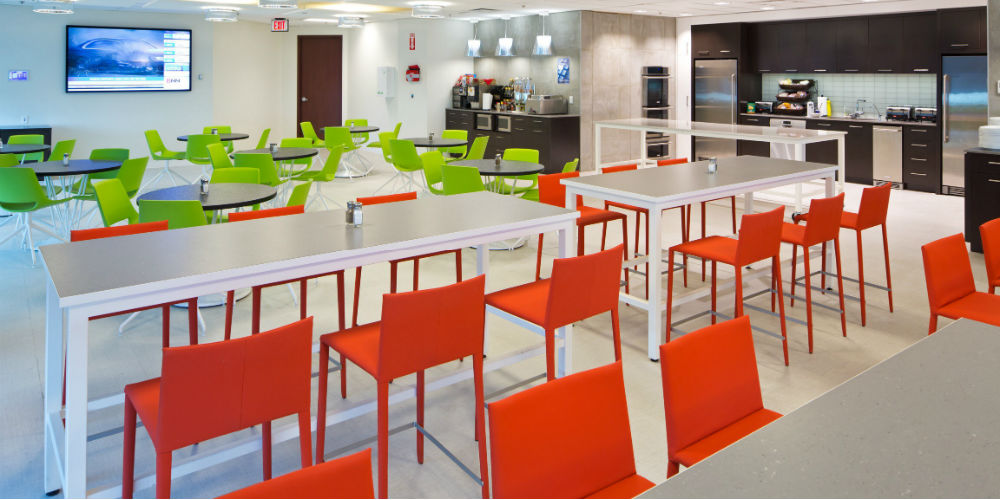Sometimes we use words so frequently, they begin to lose sharpness of meaning. The word “collaboration” has become one such buzzword in enterprise contexts. Broken down, the meaning is simple: co-labor, or working together. But in digitally transforming organizations, the development and execution of productive, synergistic collaboration practices is anything but simple.
In the modern corporate environment, there are as many obstacles to reaping the benefits of collaboration as there are helpful tools. Siloed business units and data, inter-departmental competition for resources and recognition, lack of leadership, and unclear objectives are the most obvious. In multinational enterprises, companies reliant on complex supply chains, and industries where remote work is routine, insufficient technology support is often a significant barrier to efficient teamwork and communication.
In the last few years, many specialized software solutions have enjoyed widespread adoption by companies and employees seeking more efficient and user-oriented ways of keeping teams in synch. Slack, Skype, Yammer, and Google Hangouts are a few of the more popular options. Many more specific tools exist for collaborating via videoconferencing and working in tandem on documents, designs, and presentations. Ambitious new platforms like Microsoft Teams are being developed to bring it all together, centered around powerful enterprise chat tools, in an effort to enable integrated digital workplaces characterized by conversational experiences.
We’ve been on this digital journey long enough to know that the existence of great tools does not necessarily produce great outcomes. The employees using the tools have to buy in to them, from executives to customer service reps. The implementation of digital workplace solutions has to be developed continuously as a fundamental process; approaching it as a one-off, top down initiative is less likely to engage employees and yield significant benefits.
A recent study sponsored by Aruba Networks (an HPE company), “The Right Technologies Unlock the Potential of the Digital Workplace”, highlights the ways in which “Digital Revolutionaries” increase productivity and employee satisfaction, including: work-life balance, professional and new skill development, motivation, and approval of company vision. Among survey respondents from “Digital Revolutionary” companies, 70% reported improvement in collaboration and 73% said digital workplace technology had a positive impact on their productivity. Costly turnover and absenteeism rates decrease, and cross-enterprise visibility is opened up to more stakeholders. Projects have a better chance of success, workplace health and safety are optimized, and customer service efforts are more effective.
The digital workplace doesn’t stop at employees, of course. The whole idea is to bring the self-service flexibility, mobility, personalization, and traceability of personal and consumer-facing communications systems into the workplace, and to extend digital services in all directions to empower a seamless cycle of collaboration between leadership, managers, teams, customers, partners, and suppliers.
Collaboration in the digital workplace goes well beyond the traditional enterprise intranet — in addition to knowledge sharing, it is geared toward process automation, IT and HR self-service (e.g., chatbots), embedding conversation in business functions, integration with smart buildings, and optimizing supply chain partnerships. Moreover, tools specifically designed for digital collaboration can inject new energy into traditionally cooperative activities like research, design, and prototyping.
Likewise, the benefits of supporting integrated collaboration and communications tools can be seen beyond performance metrics. Employees that are empowered to clearly understand work instructions, see how their work aligns with objectives for their team and company, and voice feedback and questions are, quite simply, happier and more willing to do their best. Leaders that have effective tools for personalizing large-scale communications, soliciting anonymous feedback, and crowdsourcing ideas can boost their signal and build trust with a larger circle of employees.
Building stronger, more authentic connections between leaders and employees has always been critical, but has become more challenging to cultivate and sustain in large enterprises. Even leaders who take pains to arrange surveys, virtual town halls, and all-hands gatherings may only be communicating in one direction, resulting in an incomplete connective loop.
Collaborative communication tools should include the best features of social media — control over anonymity and privacy, real-time feedback, bidirectional voting (e.g., thumbs up or down to indicate the most relevant questions for an upcoming town hall), and open-ended responses that can also be voted on.
These and similar capabilities such as anonymous crowdsourcing can help executives create company- or team-wide dialogues that look more like an honest two-way conversation. Employees won’t feel talked down to, and can have a stake in what gets discussed in the first place. There’s nothing more de-motivating than a hyped up all-hands meeting that completely misses the mark because none of the troublesome elephants in the room are being mentioned. Meetings are exponentially more effective when agenda items are crowdsourced ahead of time and remaining questions or feedback is solicited anonymously directly afterward.
Trust, clarity, and buy-in are essential ingredients for the success of any enterprise-wide effort. To keep these ingredients fresh and in the mix, focus on improving collaboration and communication capabilities. Digital workplace platforms are a great place to start, but don’t forget to build the human connections that make these tools a force for innovation and continuous improvement. Don’t settle for mere interoperability and lots of chats — strive for true integration and multi-directional dialogue.
If you enjoyed this article and want to receive more valuable industry content like this, click here to sign up for our digital newsletters!











Leave a Reply